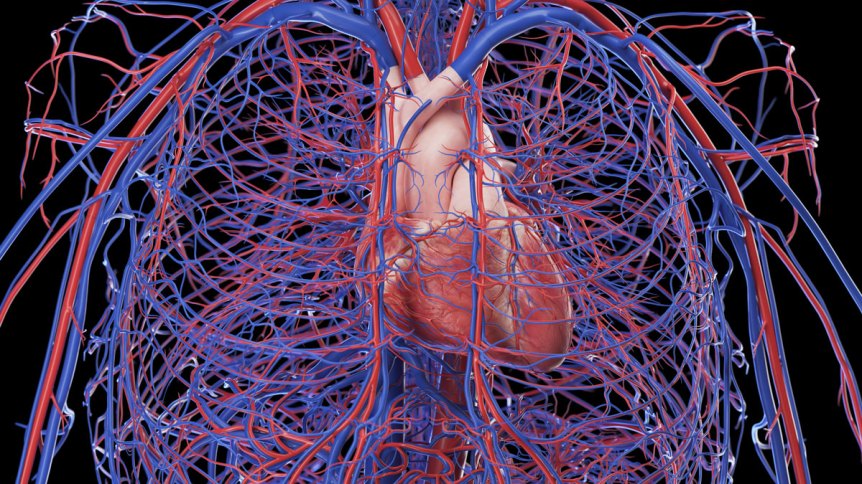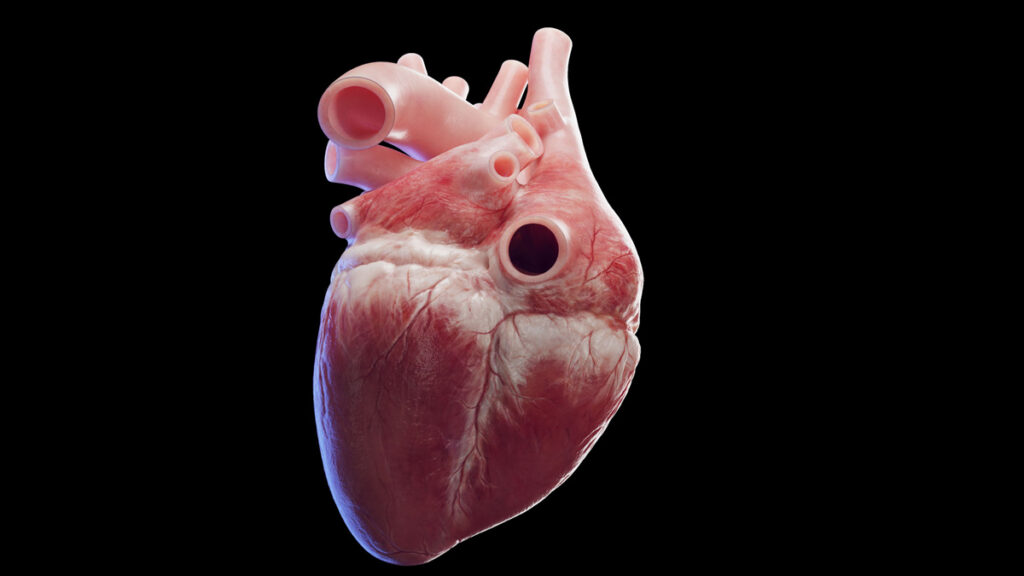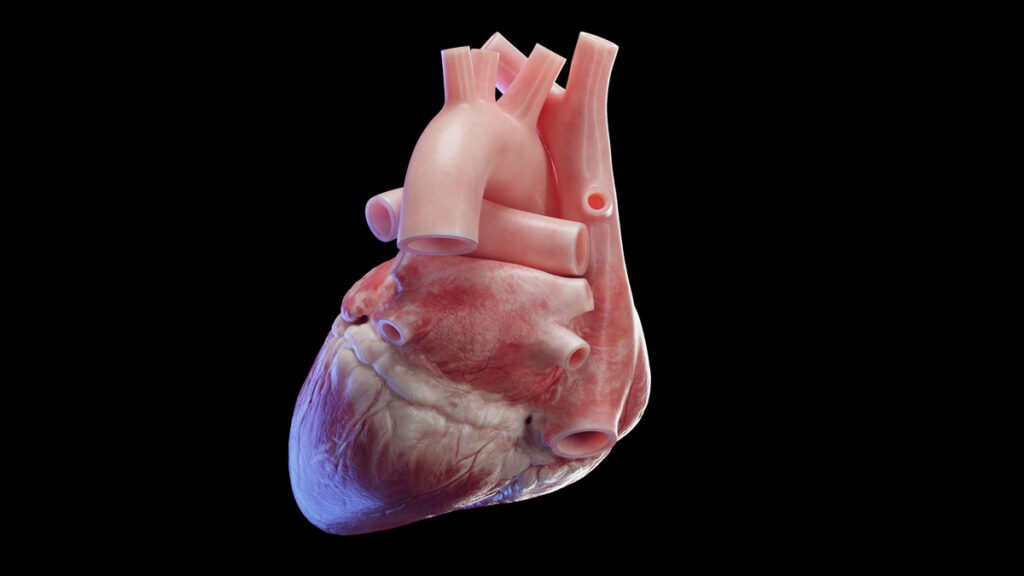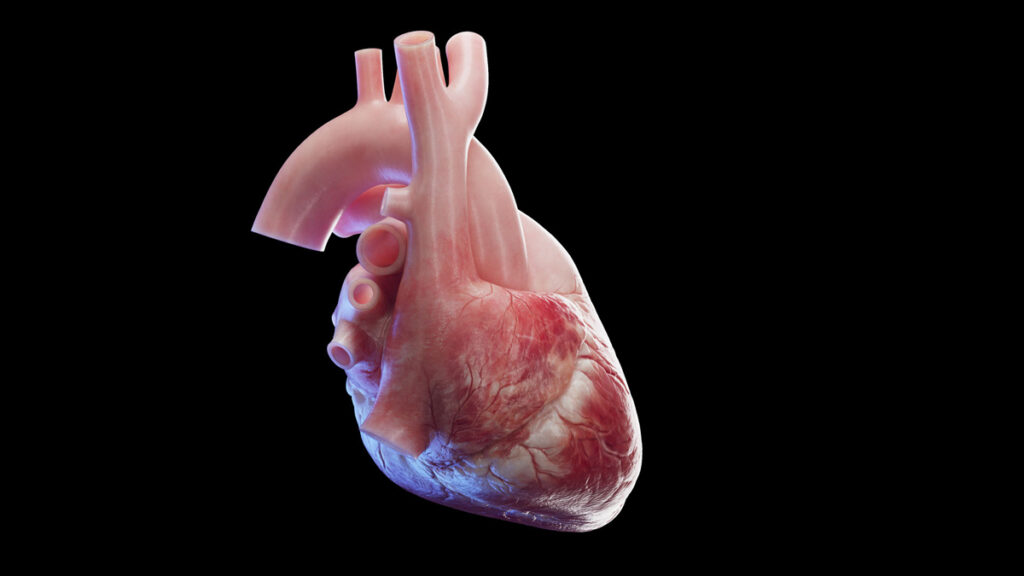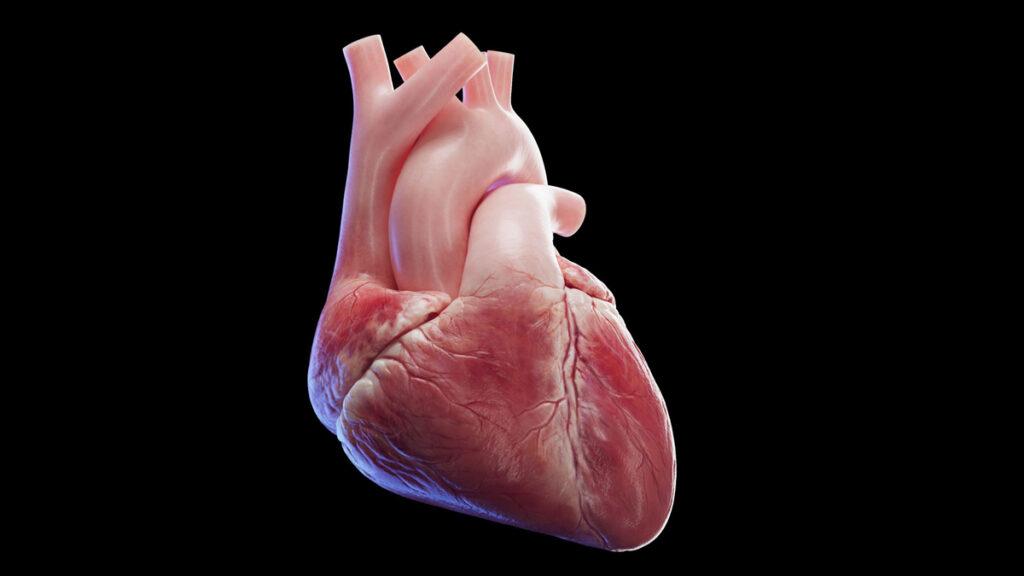The heart is our symbol of love, it’s the thing our doctors want us to pay special attention to, and it’s got more than 20 emoji variations, each with its own meaning. It’s also one of the most hardworking organs in the human body, pumping nearly 1.5 million barrels of blood during the average lifetime.
For years, 3D artists have been trying to replicate its organic mysteries for films, apps, and the medical industry, but without the scientific data needed to achieve anatomical accuracy. If you’ve been reading our blog lately, you know that changed recently with the announcement of a new SciePro model that covers the entire human body — with doctor-approved accuracy.
Today, 3D artist Eugene Pozdniakov gives us an inside look at the creation of the heart, from tools to challenges. He’ll also share his advice for any artists considering medical illustration as a career path. Let’s get into it!
Creating a 3D heart model
Since accuracy was the guiding light for this project, SciePro compiled as much data/references as they could before starting, including actual 3D scans, MRIs, photo libraries, and more. They even visited cadavers in person to get past the deficiencies of anatomy atlases.
The problem with atlases is that they only provide a few limited angles of viewing the body. While the heart looks different from every angle, an atlas may only provide a 2D image from the front and sides — maybe top and bottom if you’re lucky — forcing artists to guesstimate their way through. The only way to make an accurate 3D version of the human heart is to obtain a 360-degree view of it. And that’s exactly what SciePro wanted to do.
References in hand, Eugene sculpted the heart using ZBrush and multiple subdivision levels. By employing the Geometry HD setting he was also able to include those smaller details and manage such a heavy mesh. Blender was then applied to the heart’s cross-sections and retopology. Since Eugene was new to sculpting an organ as complex as the human heart, he worked with a doctor to confirm the accuracy of his designs and give him notes along the way.
To texture the heart, Eugene utilized a UDIM UV pipeline and 3ds Max for unwrapping. Each UV atlas had to also be 8K to match the rest of the 3D body. And while the accuracy of this model takes up a big portion of the spotlight, we can’t overshadow Eugene’s artistry. His Mari work is exquisite, for instance.
The artistic skills of SciePro’s founder, Sebastian Kaulitzki, were also put to use during the rendering process, as he was responsible for the setup, materials, and lighting needed to make this heart look natural and realistic. 3ds Max + V-Ray were his go-to tools.
Since a heart’s main function is to beat, rigging in 3ds Max was necessary at the start of the animation process. To make the rig easier to control, Eugene used a bones-based setup that didn’t rely on blend shapes and notes that, “It was an interesting challenge to set up all of the dependencies and controllers together for such a complex and organic shape.”
Several clips of MRI video footage were referenced to match the heartbeat timing and to properly synchronize everything for its animation. The rigging they built out enabled them to control multiple bones at once with drivers and constraints. Once everything was good to animate, a simplified version of the heart with a lower-poly count was required to avoid viewport lagging and ensure nothing was missing in the real-time animation.
Challenges and advice for 3D artists
One of the main requirements of this project was to have no intersections between any of the models so that anyone who uses it can simply render an image to their liking without any parts of it breaking in the process. It’s a massive undertaking considering how close everything is to each other in the human body.
Static models, like bones and the liver, could be handled pretty quickly by paying extra special attention to the spots in-between other structures. Dynamic models, like the heart and lungs, were a different story though, requiring a lot more work, especially to ensure a smooth animation process.
But whether someone is gearing up for intersection work or trying their hand at medical illustration, Eugene has some basic advice to follow. To start, building a custom pipeline and planning as much as possible at the beginning of the project is incredibly helpful, as the scale of these projects always requires multiple tools. Planning tends to minimize rework along the way.
Once your plan is in hand, you’re still going to need some help, according to Eugene. “No matter how much talent, experience, artistic, and technical skills you have, you can’t create medically accurate models without collaborating with medical experts. Mother Nature made us very complicated, so don’t expect to cover all the anatomical nuances — even if you have all of the references in front of you.”
Last but not least, it’s very important to be passionate about medical anatomy. It can be an intricate process, but it can also have a big impact on doctors and patients, which takes it far past the world of basic modeling.
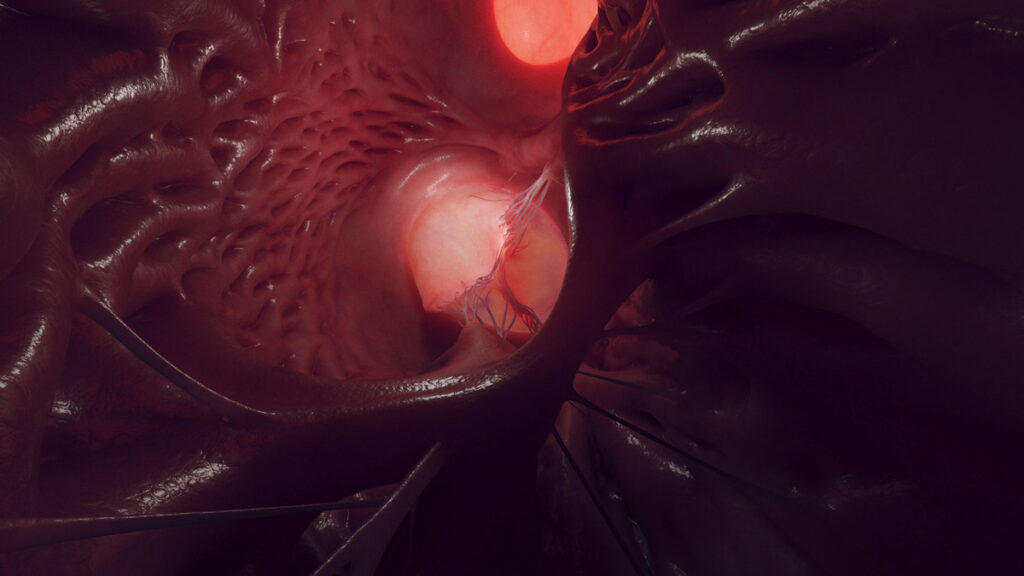
What do medically accurate 3D models mean for the world?
That question can sound hyperbolic to the average person, but an anatomically accurate heart does have the potential to change how educators, surgeons, and people in med-tech fields do their work. In the United States, someone has a heart attack every 40 seconds. Having a better understanding of the heart for patients and doctors can go a long way to living healthier lifestyles and decreasing the time in open-heart surgery.
In fact, a 2021 study shows that surgeries of 4–8 hours were reduced by 1.5 to 2.5 hours when anatomical models and patient-specific instruments were used. Doctors and educators can already hold a basic replica, but imagine 3D printing one with a mechanical replacement valve built into the exact section of the heart a patient is wondering about. It could do wonders for diagnostic explanations and patient soothing.
Another related use could be an app the patient can access from their medical provider that shows a 3D view of their heart, so they have a better understanding of the procedure they might need in the future, the effects of a high-cholesterol diet over time, or the effects of smoking.
In short, the applications for a model like this feel endless. We’re excited to see how it’s used in the future.
For more information about SciePro, head to their website and TurboSquid profile.

